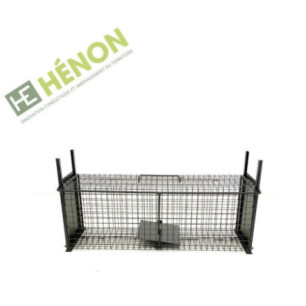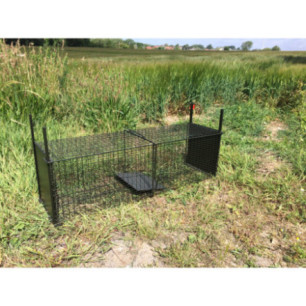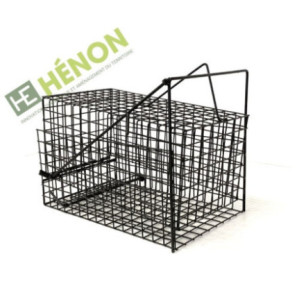
15 products
Introduction to trapping
Trapping is a widespread practice in France. Trapping is used to regulate many species considered invasive or harmful. It is a practice regulated by law and contrary to what many people think, a trapper cannot trap everything he wants.
First of all, to trap, you have to pass a trapping training course to become an approved trapper. This training lasts about 16 hours and is spread over two days. It is usually organised by the hunters' federations. During this training, you will learn to recognise harmful and protected species. You will also learn how to use certain traps and which ones to use depending on the animal to be trapped. Out of 16 hours of training, two hours are devoted to the suffering of animals. The aim is to limit the suffering of the animal when trapping. If you wish to take this training course and become an approved trapper, the easiest way is to go to the website of your Departmental Federation of Hunters to obtain all the necessary information.
Secondly, the trappable species are clearly defined by the Ministry of the Environment. The trapping rules are strict and clear. For example, Article L411-1 of the Environment Code provides for a penalty of €9,000 and six months imprisonment if a protected species is trapped and killed.
Thirdly, most of the traps used are approved by the Ministry of the Environment. So you can't just use any trap. All the traps you will find on Hénon Shop are approved and respect all the environmental standards.
All these arguments prove that trapping is a regulated practice.
However, the rules are different if you wish to trap at home. Indeed, if you are bothered by a pest at home, you do not need to be trained as a trapper, a simple trap such as the "Box of Fawns" will suffice.
Our pest traps
The traps sold on the Hénon Shop website are made in France in our workshops. They meet all the trapping standards. With 25 years of experience in the field of trapping and hunting, we try every day to produce the best trap possible to guarantee you an efficient trapping. In this category you will find items for trapping pests. These are rather versatile traps which, depending on their size, can be used for trapping rats, muskrats, coypu, weasels (and other large mustelids), raccoons and even foxes for the largest of them.
Arguments in favour of trapping
Trapping can limit the spread and damage of many species. Even though some people dare to criticise trapping, there are many arguments in favour of trapping. There are two types of trapping:
Pest species trapping
Harmful species (today called species likely to cause damage) are for example, and depending on the department, the fox, the crow or the marten. These are indigenous species, i.e. they are naturally present here and have not been brought in by man. In general, these species are trapped because they pose a threat to small game, or because they can cause serious agricultural damage.
Trapping of invasive species
Invasive species are not native species. They have been brought in voluntarily or involuntarily by man, and have been able to develop and proliferate. The trapping of these species is essential because they represent a danger for the balance of local species. Coypu, muskrat, raccoon and other non-European animals need to be controlled to limit their spread. On our website you will find robust and effective traps for all these pests and invasive species.
















































